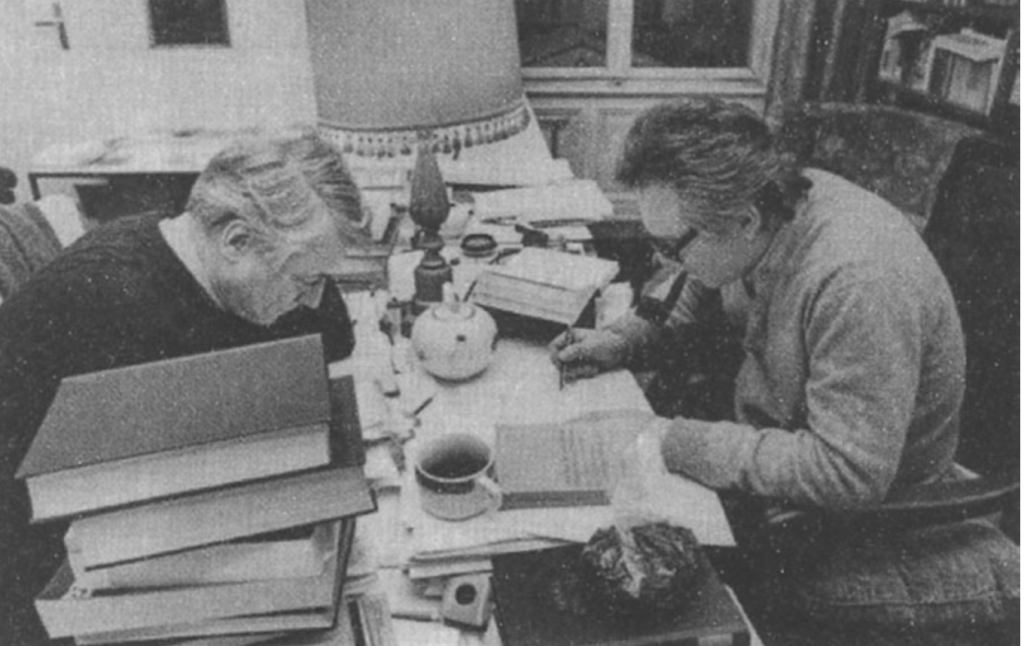The revolutionary subject, who defines its politics in terms of the lack of the system’s structural excesses, is always caught between impatience and courage in Badiou’s Theory of the Subject. We should not forget that Badiou is developing a subject outside of identity, class, and gender.
Badiou presents two primary historical and structural versions of the subject, that of Aeschylus and that of Sophocles. Of the four mathemes that constitute the subject, (courage, justice, anxiety and superego) it is courage that sustains the division of the one that founds political subjectivity writ large, and it is courage that sustains allegiance to the event for the revolutionary subject.

If we lean on Holderlin’s reading of Sophocles, which articulates precisely how the subject formation is always rooted in an insurrection from the law, we find a subject that is rooted in a split subject. Knowledge, for Oedipus is posed to an object that Oedipus knows not (the Sphinx), from which the unknown is generated.
Aeschylus’ subjet is on the side (to the contrary) of the thinkable and on the side of right, of being diverted from the law. It is Sophocles’ subject that is rooted in overcoming the superego, that argues the subject is subverted by the law of superego (Creon or the state) and the law of anxiety (Antigone or the subject before the law) where the internal division of that which constitutes them, is a division beyond the law of anything that can have a legal value (TOS, 164). The political locus that constitutes the subject for Sophocles is two, not one.
Aeschylus, on the contrary, posits that the subjects interrupts, through justice, this division of the One that the political subject is founded upon. How else did Freud choose Oedipus as the subject of two, of a subject that is constituted by the law of the unconscious, of the internal split? In the Aeschylian subject formation, the subject relates to justice by the courage of the new, as it seeks to overturn the reversal of the superegoic injunction. Therefore, the Aeschelyan tragedian is on the side of the thinkable – not the unthinkable where Sophocles’ heroes are located. The founding gesture of justice on the contrary, for Aeschylus is the withering of the old right, and not death as it is for Sophocles.
Both models privilege courage and the demand to overturn the anxiety of the superego. At the same time, the more the revolution embraces courage and refuses anxiety and superego, the more that it participates in destruction, and the tipping of the scales into the acts of a people, of the One of the proletariat.
The Subject After Class and Totality
Following Marx, the proletarian subject is the primary concern for Badiou, yet this particular subject, which is rooted in the masses (the real) is a vanishing subject, like a signifier in the Lacanian register.
To define the revolutionary subject, (which Marx put at the center of everything) as the single most distinct group, we only fail in Badiou’s estimation. It is no longer possible to easily rely on class differences. Class differences are after all weak differences. All totalities, for which Marxism derives the subject out of a totality is only a particular, as Badiou comments, “What belongs to the whole is in the position of the other” (TOS, 217). He continues by noting that:
“No Marxism is in a position to survey any totality at all. That which is leftover, according to Cantor is what grounds the value of excess” (TOS, 219).
One purpose of Badiou’s text is set around defining the contours of the revolutionary subject outside of the masses, which are after all representative of the real, and representative of weak differences. Everything that exists consists of weak differences (Lacan’s signifiers), and the subject having been marked by the strong difference of the real, must disappear so that the weakest difference possible – the difference between places – be the one governing becoming (TOS, 61 – 62). If weak differences are what govern becoming for a revolutionary situation, and for a revolutionary subject, then we must ask to what extent is it possible for weak differences to last until courage collapses into superego and anxiety. Does it make sense to follow Žižek by pointing out an additional matheme of the subject, that of the subject of enthusiasm?
If the subject of the masses is a disappearing subject, it is only the revolutionary subject that persists. As Badiou notes, the subject of the crowd under rebellion does not disappear, but the question remains one of allegiance to the revolution and persisting in courage beyond the law of the superego (the state and the onset of anxiety). It is a question centered around first abolishing old identities and allowing weak differences to persist and govern new becoming’s and new potentialities of being.
The crowd is the vanishing term for art, for the clinamen, for the real. In order for a representative place (out)place of politics to come into existence, the subject must be abolished by its old identity. But we must remember that we are dealing with the subject as such, and the project is not purely limited to the subject’s sexual and or class identity.



Leave a comment